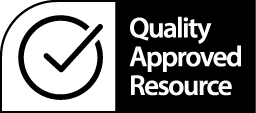What does engagement and observation mean to me?
A leaflet about engagement and observation which is used by your care team to help us keep you and others safe and well. Everybody on an inpatient ward is nursed on one of four levels of observation.

This leaflet may not be reproduced in whole or in part, without the permission of Cumbria, Northumberland, Tyne and Wear NHS Foundation Trust
What does engagement and observation mean to me?
-
Patient's Name and Nurse
Name:
………………………………………………………………………………………………………………………………………………
Key Nurse:
……………………………………………………………………………………………………………………………………………..
You have a right to be involved in decisions about your care and level of engagement and observation and can expect a copy of your engagement and observation care plan from your key nurse.
-
What is engagement and observation?
Engagement and observation is used by your care team to help us keep you and others safe and well. We will help you to feel more in control of your thoughts, feelings and actions and support you to keep yourself safe.
-
Levels of engagement and observation
Everybody on the ward is nursed on a level of observation; there are four levels of observation:
• General observation
• Intermittent observation
• Within eyesight observation
• Within arms length observation -
General engagement and observation
This is the minimum level of observation which most patients can expect during their stay in hospital. The nursing staff are however required to know where you are all of the time therefore we ask that if you are allocated leave from the ward you let us know as you leave and return.
-
Intermittent engagement and observation
This is an increased level of observation, used to ensure that nursing staff are regularly available for you to improve your wellbeing and help you to feel safe on the ward. Staff will approach you a number of times within a specified time frame to see how they can best
support you. You will also be given the opportunity to discuss what you feel is helpful as part of your engagement and observation care plan.
You may be able to leave the ward but this needs to be agreed with
the staff involved in your care. -
Within eyesight engagement and observation
This is a higher level of observation to enable your care team to support you at all times. The nursing staff will not always be close to you, but they will be within “eyesight.” The care team will always discuss with you your individual needs around your privacy and dignity.
You may be allocated escorted leave from the ward and your key nurse will be able to discuss this with you.
-
Within arms length engagement and observation
This is the highest level of observation we use to enable a member of the nursing staf to be close to you at all times to help you with your current needs. The care team will always discuss with you your
individual needs especially related to privacy and dignity.Any leave of the ward is usually only allocated in exceptional circumstances whilst you are being nursed on this level of observation. You care team will explain why this is necessary.
-
Engagement and observations at night and “sleep well”
In some of our wards you may hear the term “sleep well”.
What we mean by the term “sleep well”
Normal sleep, both total hours and the timing of sleep, is vital for normal brain function and physical health. We want to promote a healthy sleep pattern for patients whilst they are in hospital whilst maintaining their safety and wellbeing.The aim is to provide at least six hours uninterrupted sleep for patients who have been screened and assessed as being suitable for this intervention.
This will be discussed with you on an individual basis by the team caring for you.
Each day your care team will review your needs in relation to your engagement and observation level and you will be fully involved in these discussions to resolve any problems or difficulties you may face.
-
References
CNTW(C)19 – Engagement and Observation Policy
-
Information about content, other formats and version control
Further information about the content, reference sources or production of this leaflet can be obtained from the Patient Information Centre. If you would like to tell us what you think about this leaflet please get in touch.
This information can be made available in a range of formats on request (eg Braille, audio, larger print, easy read, BSL or other languages). Please contact the Patient Information Centre Tel: 0191 246 7288
Published by the Patient Information Centre
2024 Copyright, Cumbria, Northumberland, Tyne and Wear NHS Foundation Trust
Ref, PIC/03/0124 January 2024 CNTW(C)19 V7
www.cntw.nhs.uk Tel: 0191 246 7288
Review date 2027
